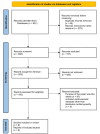The Role of Cardiac Biomarkers in Evaluating Takotsubo Cardiomyopathy: A Systematic Review
- PMID: 40677457
- PMCID: PMC12267605
- DOI: 10.7759/cureus.86168
The Role of Cardiac Biomarkers in Evaluating Takotsubo Cardiomyopathy: A Systematic Review
Abstract
Takotsubo cardiomyopathy (TTS) is an acute, reversible cardiac condition marked by transient wall motion abnormalities of the left ventricle, typically triggered by intense emotional or physical stress. Despite being first described in 1990, TTS remains relatively obscure due to limited understanding of its pathophysiology. Clinically, it mimics acute coronary syndrome (ACS), presenting with symptoms such as chest pain, shortness of breath, and ECG changes like ST-segment deviations. This resemblance often leads to initial misdiagnosis and treatment with antiplatelet and anticoagulant therapy - interventions that lack proven efficacy in managing TTS. Given the diagnostic challenges posed by the clinical overlap between TTS and ACS and the absence of disease-specific diagnostic markers, several researchers have investigated the potential role of cardiac biomarkers in distinguishing between the two conditions. This systematic review aims to explore the diagnostic utility of cardiac biomarkers in evaluating TTS. We conducted a systematic literature search using PubMed and Google Scholar, focusing on studies published between 2013 and August 10, 2023. Inclusion criteria were limited to human studies published in English with freely available full texts that evaluated the diagnostic performance of cardiac biomarkers in TTS. A total of eight studies met the criteria and were included for in-depth analysis. These studies examined a range of biomarkers, including established ones such as troponin, B-type natriuretic peptide (BNP), N-terminal proBNP, and creatine kinase-myocardial band (CK-MB), as well as emerging markers like copeptin and microRNAs (miRNAs). Collectively, the studies analyzed data from 3,602 individuals. Troponin showed limited diagnostic accuracy in differentiating TTS from ACS. In contrast, BNP exhibited stronger discriminatory ability, both alone and when used in combination with other markers. The combined use of BNP, troponin, and CK-MB enhanced diagnostic performance. Furthermore, emerging biomarkers such as copeptin and miRNAs demonstrated promising potential due to their early release patterns, association with stress-response mechanisms, and distinct expression profiles, offering new avenues for improving diagnostic accuracy. This review underscores the potential diagnostic value of both established and emerging cardiac biomarkers in identifying TTS. The findings support further research into novel biomarkers, which may ultimately lead to earlier and more accurate diagnosis, reduce inappropriate treatment, and enable more targeted and timely clinical interventions.
Keywords: apical ballooning syndrome; biomarkers; broken heart syndrome; stress cardiomyopathy; takotsubo cardiomyopathy.
Copyright © 2025, Kilaru et al.
Conflict of interest statement
Conflicts of interest: In compliance with the ICMJE uniform disclosure form, all authors declare the following: Payment/services info: All authors have declared that no financial support was received from any organization for the submitted work. Financial relationships: All authors have declared that they have no financial relationships at present or within the previous three years with any organizations that might have an interest in the submitted work. Other relationships: All authors have declared that there are no other relationships or activities that could appear to have influenced the submitted work.
Figures


Similar articles
-
The comparative and added prognostic value of biomarkers to the Revised Cardiac Risk Index for preoperative prediction of major adverse cardiac events and all-cause mortality in patients who undergo noncardiac surgery.Cochrane Database Syst Rev. 2021 Dec 21;12(12):CD013139. doi: 10.1002/14651858.CD013139.pub2. Cochrane Database Syst Rev. 2021. PMID: 34931303 Free PMC article.
-
[Volume and health outcomes: evidence from systematic reviews and from evaluation of Italian hospital data].Epidemiol Prev. 2013 Mar-Jun;37(2-3 Suppl 2):1-100. Epidemiol Prev. 2013. PMID: 23851286 Italian.
-
Systemic Inflammatory Response Syndrome.2025 Jun 20. In: StatPearls [Internet]. Treasure Island (FL): StatPearls Publishing; 2025 Jan–. 2025 Jun 20. In: StatPearls [Internet]. Treasure Island (FL): StatPearls Publishing; 2025 Jan–. PMID: 31613449 Free Books & Documents.
-
Signs and symptoms to determine if a patient presenting in primary care or hospital outpatient settings has COVID-19.Cochrane Database Syst Rev. 2022 May 20;5(5):CD013665. doi: 10.1002/14651858.CD013665.pub3. Cochrane Database Syst Rev. 2022. PMID: 35593186 Free PMC article.
-
Systemic pharmacological treatments for chronic plaque psoriasis: a network meta-analysis.Cochrane Database Syst Rev. 2021 Apr 19;4(4):CD011535. doi: 10.1002/14651858.CD011535.pub4. Cochrane Database Syst Rev. 2021. Update in: Cochrane Database Syst Rev. 2022 May 23;5:CD011535. doi: 10.1002/14651858.CD011535.pub5. PMID: 33871055 Free PMC article. Updated.
References
-
- Sato H, Tateishi H, Uchida T, et al. Clinical Aspect of Myocardial Injury: From Ischemia to Heart Failure. Tokyo, Japan: Kagaku Hyouronsha; 1990. Takotsubo-type cardiomyopathy due to multivessel spasm; pp. 56–64.
-
- SVH Heart Health. (n.d. Takotsubo cardiomyopathy. https://www.svhhearthealth.com.au/conditions/takotsubo-cardiomyopathy https://www.svhhearthealth.com.au/conditions/takotsubo-cardiomyopathy
-
- Takotsubo cardiomyopathy: review of broken heart syndrome. Boyd B, Solh T. JAAPA. 2020;33:24–29. - PubMed
Publication types
LinkOut - more resources
Full Text Sources
Research Materials
Miscellaneous
